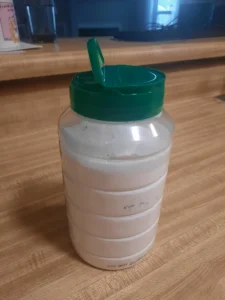
The Key Differences Between Baking Soda and Baking Powder in Baking
Baking soda and baking powder are both essential ingredients when it comes to baking, but they serve different purposes and function in distinct ways. Knowing how to properly use each one is crucial to achieving the desired texture and rise in your baked goods.
Baking Soda
Baking soda, scientifically known as sodium bicarbonate, is a single-ingredient leavening agent. To activate it, you need an acidic ingredient like lemon juice, vinegar, or buttermilk. When combined with acid, baking soda releases carbon dioxide, which causes the dough or batter to rise. One important thing to keep in mind is that baking soda starts working as soon as it’s mixed with the acid, so for the best results, recipes that use baking soda should be baked right after mixing.
Baking Powder
On the other hand, baking powder contains multiple components, including baking soda, an acid (usually cream of tartar), and a moisture-absorbing ingredient like cornstarch. It’s a complete leavening agent because it contains both an acid and a base. There are two types of baking powder: single-acting and double-acting. Single-acting baking powder releases gas when it comes into contact with liquid, while double-acting powder works in two stages—once when mixed with liquid and again when exposed to heat. Double-acting baking powder is particularly useful for recipes that require some time before baking.
Main Differences
- Composition: Baking soda is purely sodium bicarbonate, while baking powder is a mixture of baking soda, an acid, and a moisture absorber.
- Activation: Baking soda needs an acidic ingredient to activate, whereas baking powder only needs liquid to start working because it contains its own acid.
- Usage: Baking soda is best used in recipes with acidic components, while baking powder is ideal for recipes that don’t contain additional acids or need a slower leavening process.
Conclusion
It’s important to remember that baking soda and baking powder are not interchangeable. Each has its own role in the baking process. Understanding when and how to use each one will help you ensure your baked goods rise properly and have the right texture. By knowing these differences, you can confidently choose the right leavening agent for any recipe you’re tackling.





